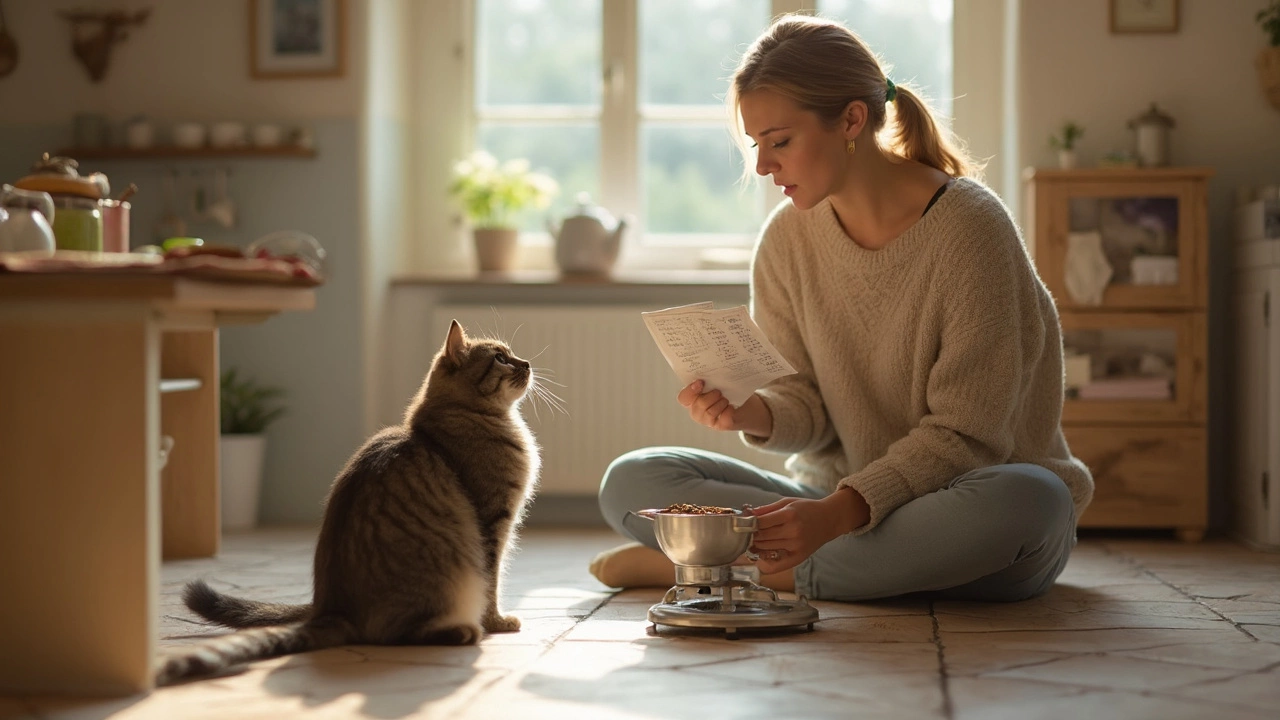Cat Feeding Guide: Easy Steps for a Happy, Healthy Indoor Cat
If your cat spends most of its life inside, its diet needs extra attention. Indoor cats don’t tire themselves out like outdoor hunters, so they can easily gain weight if you’re not careful. The good news? Feeding the right food in the right amount is simple once you know what to look for.
Choosing the Right Food
First, check the label. Look for a protein source listed as the first ingredient – chicken, turkey, or fish are common choices. Cats are obligate carnivores, which means they need animal protein to stay healthy.
Next, think about texture. Some cats love pâté, while others prefer shredded or dry kibble. If you’re not sure, try a small amount of each and see which one your cat prefers. A mix of wet and dry can give hydration plus dental benefits.
Pay attention to added fillers. Corn, wheat, and soy add calories without much nutritional value. Aim for a formula with fewer fillers and more natural ingredients.
Special needs matter too. If your cat is overweight, look for a weight‑control formula with fewer calories but still high protein. For seniors, a senior‑specific diet with joint‑supporting nutrients can make a big difference.
Feeding Practices & Portion Control
Measure every meal. A kitchen scale or a scoop from the bag works best. Over‑estimating portions is the easiest way to cause weight gain.
Set a feeding schedule. Most indoor cats do well with two meals a day – morning and evening. If you prefer free‑feeding dry kibble, keep the total daily amount in a measured bowl and refresh the food every few hours.
Watch for signs of hunger or fullness. If your cat finishes the bowl quickly and looks for more, it might need a higher‑calorie food rather than extra portions.
Don’t forget water. Wet food helps, but fresh water should always be available. Some cats love a water fountain – the moving water can encourage them to drink more.
Finally, treat sparingly. Treats should be less than 10 % of daily calories. Choose healthy, low‑calorie options like freeze‑dried chicken strips.
By picking a high‑protein food, serving the right amount, and keeping water handy, you give your indoor cat a diet that matches its lifestyle. Keep an eye on weight, adjust portions as needed, and you’ll see a healthier, more energetic kitty in no time.
How Many Cans of Wet Food for a Cat a Day? Real Answers for Cat Parents
How much wet food should you actually be giving your cat each day? The answer depends on factors like your cat's age, activity level, and the size of the cans. This article breaks down how to figure out the right amount, what vets recommend, and common mistakes cat owners make with portion sizes. You'll also find practical tips for measuring and adjusting, so your cat gets exactly what they need. Get the clearest info to feel confident about your next mealtime.
